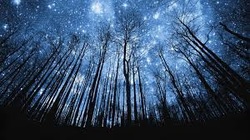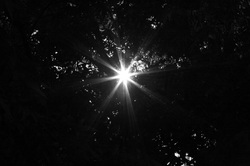
Scientists working at the Hubble Space Telescope found the distant galaxy. The distance was then confirmed with the ground-based Keck Observatory in Hawaii. The study is published in the journal Nature. See more here.
 www.dailygalaxy.com
www.dailygalaxy.com Because it takes light so long to travel from the outer edge of the Universe to us, the galaxy appears as it was 13.1 billion years ago, 700 million years after the Big Bang. Because the Universe is expanding, its distance from Earth is 30 billion light-years
The system is small: about 1-2% the mass of the Milky Way and is rich in heavier elements.
But it has a surprising feature: it is turning gas and dust into new stars at a remarkable rate, churning them out hundreds of times faster than our own galaxy can. It is the second far-flung galaxy known that has been found to have a high star-production rate.
 twinkle.usegrid.net
twinkle.usegrid.net This really makes me wonder about what happens to lost souls. If our departed loved-ones reach the highest achievement a human can strive for, do they become stars? I, for one, would like to be a star. I can't imagine what that would entail though—cold and alone, it would need a specific strength to create new life forms. As Edgar Cayce said, we could become co-creators.
Listen to this short explanation. Co-creation - Edgar Cayce's Cosmology by McMillinMedia. http://youtu.be/iPwJlltKZHQ

 RSS Feed
RSS Feed






